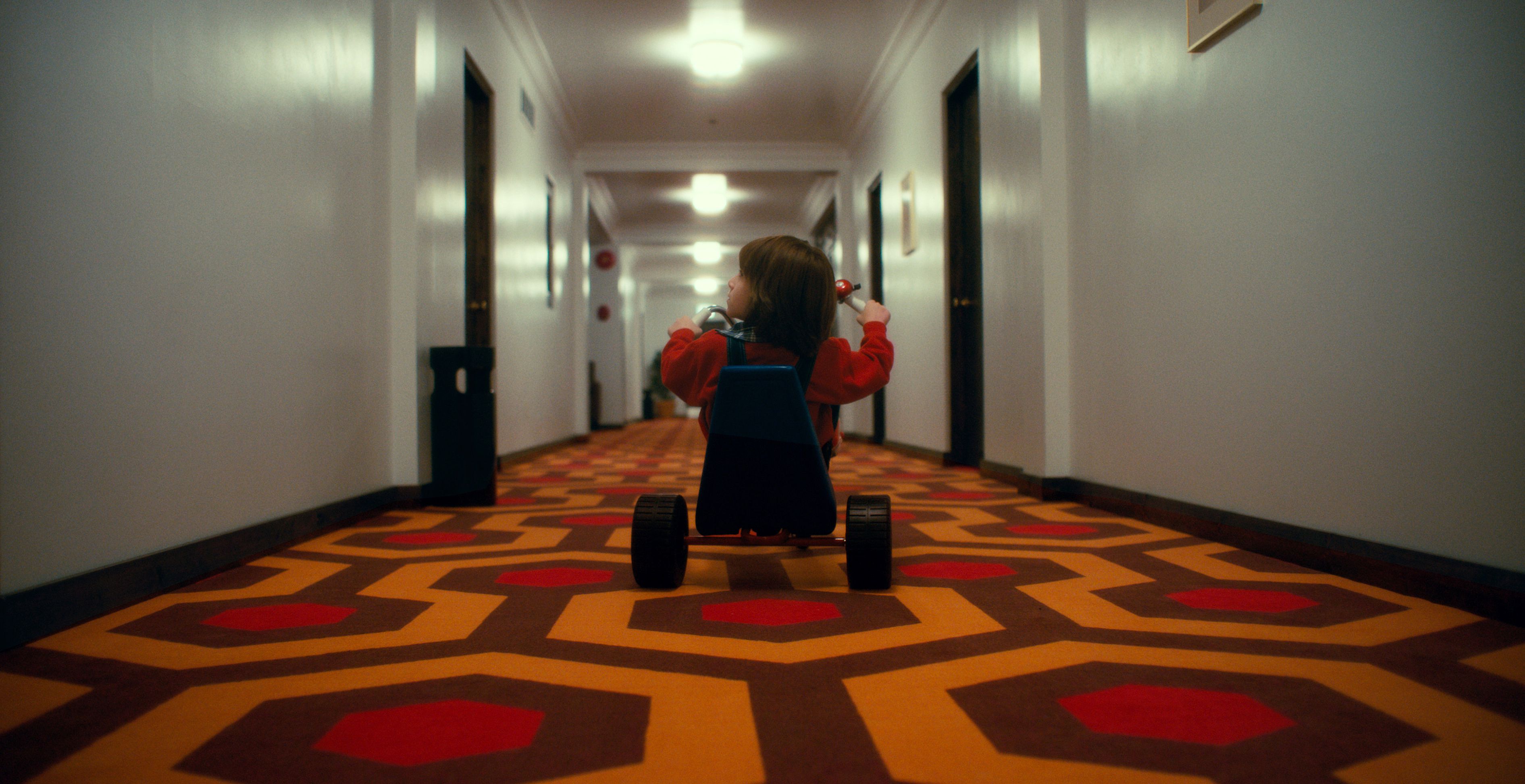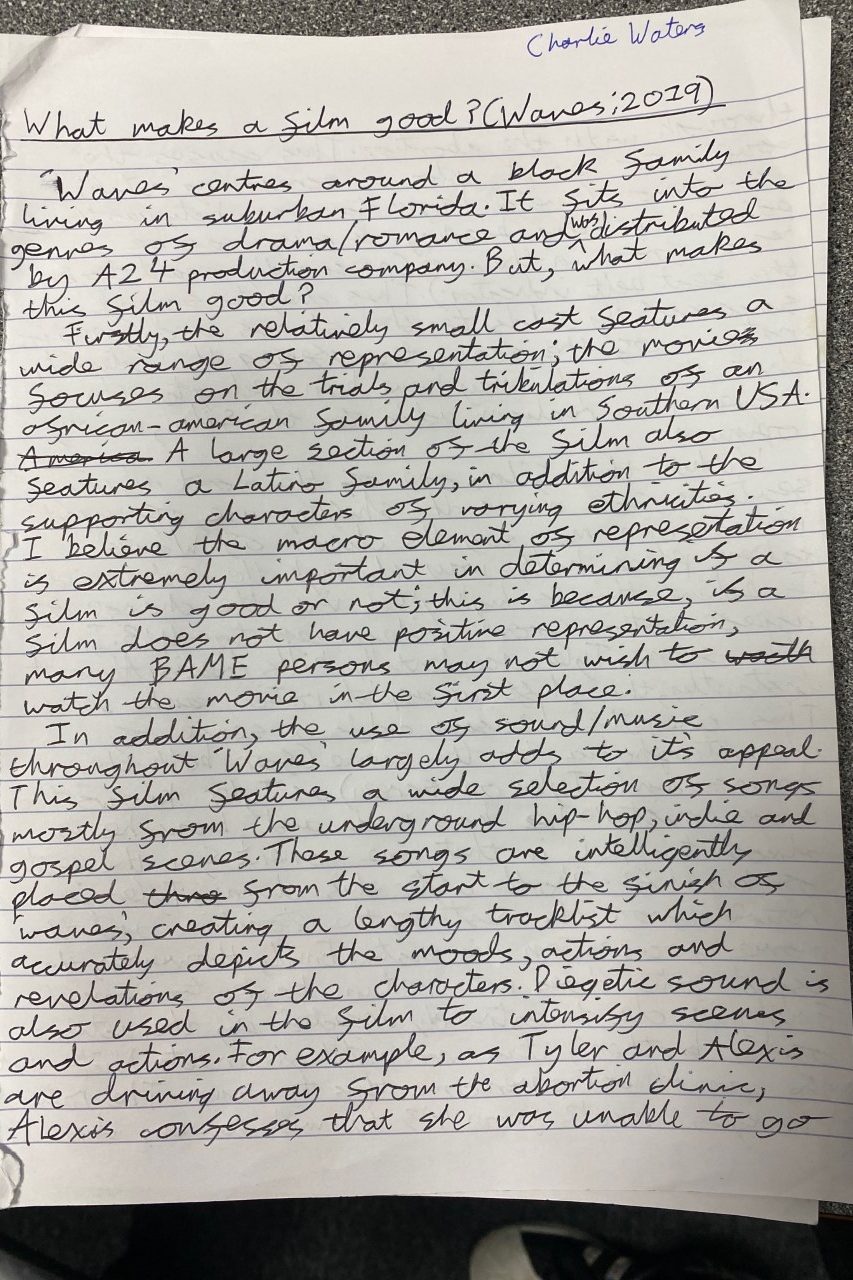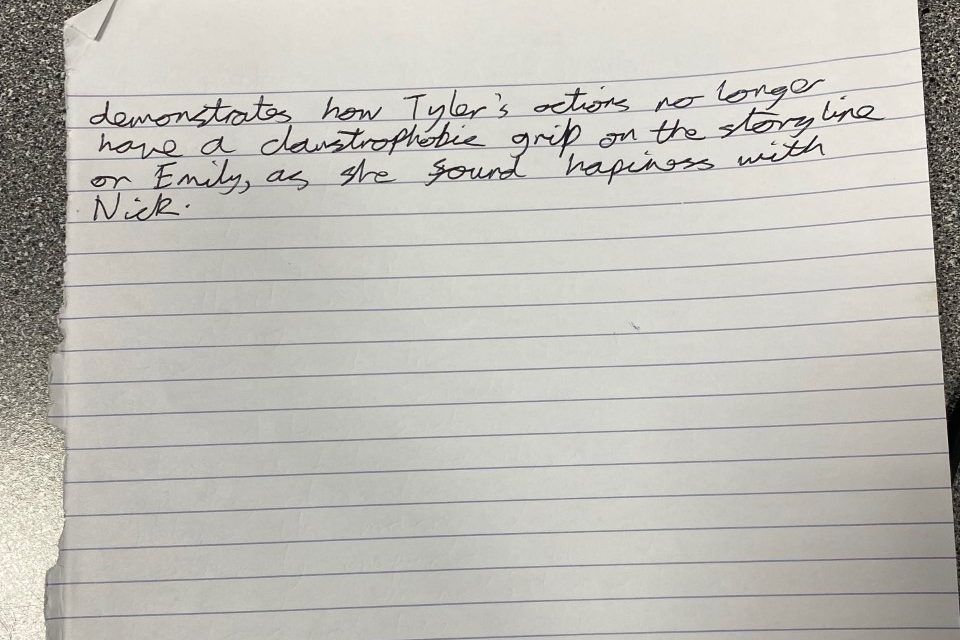Rating: 8.5/10
Film element focus: cinematography
Memorable scene: when Danny is on his tricycle and sees the twins.
Rating: 8.5/10
Film element focus: cinematography
Memorable scene: when Danny is on his tricycle and sees the twins.
I would rate this film a 10/10, especially considering its significance in film.
My memorable scene is when Kubrick introduces the Maze, as it flattens the two protagonists in a long shot and adds importance to the maze as it towers over them.


Overall, I would rate Stanley Kubrick’s “The Shining” as an 7/10, for its gripping horror as madness consumes Jack Nicholson’s character slowly throughout the film’s runtime, and Kubrick’s use of unique cinematography. The most memorable scene/scenes placed in the film were the knee-level tracking shots of Danny as he rode around the Overlook hotel on his tricycle.
I give this movie a 9/10. The most memorable scene for me was the opening shot as the opening credits come on screen as it shows how isolated the hotel is from the rest of the world and creates a tone carried throughout the movie.

Critical score: 9/10
A memorable scene is when Jack is staring at Wendy and Danny outside the window and you can see in his eyes he is going insane.

‘Waves‘ 2019 analyse…




The formula for modern day “box office hits” is very similar, in the sense of genre and expansion of an original story. Here, shown on boxofficemojo.com, the top 10 films in 2019 were for, for the most part, created by Walt Disney Studios, or other giant film corporations such as Sony Pictures Entertainment and Warner Bros. A large majority of these films were based in the genres of action and fantasy, grossing massive profits for their companies. Another feature than is noticeable is that these films already build onto an original film or franchise, including the remakes, or “reboots” of film classics such as “IT”, “Aladdin”, and “The Lion King”.

It’s clear that these conglomerates have a monopoly over the realm of film; and for good reason. They create films that are appropriate for most audiences, children in particular, and films that invoke deep feelings of nostalgia from older audiences’ childhoods, which encourages them to watch their films, even if they are no longer their target audience.
In cinematography, diegesis refers to the world of the film and what’s happening inside it.
Diegetic gaze is described as the way the audience interprets different elements of the film, e.g. how a specific shot enhances or alters the tone of a scene

Intra-diegetic gaze is used when the audience is placed within a character’s viewpoint, typically as a first person view, e.g. during scenes where a sniper rifle is in use – the camera typically follows the perspective of the scope.

Extra-diegetic gaze, often known as “4th wall breaking”, is used when a character addresses the audience by either looking into the camera, or talking to them through monologue, e.g. films such as Deadpool use this to stand out from other films in their genre, emphasising comedic elements of the film.

Cinematography is the art form behind motion pictures. It involves the use of camera angles and various elements of mise-en-scene, such as setting, camera movement, and lighting.
A highly recognised art in film, cinemaphotography has a wide range of talented directors who’ve put their own spin on their practice, such as unique camera angles or intense camerawork, some of which is covered in the documentary “Visions of Light: The Art of Cinematography”.